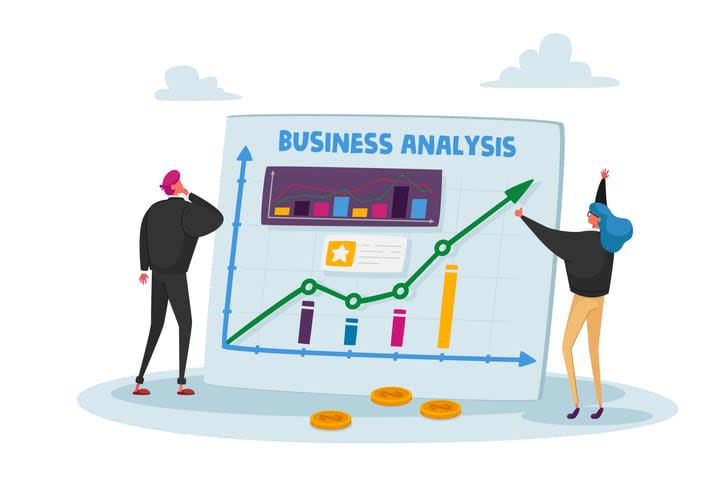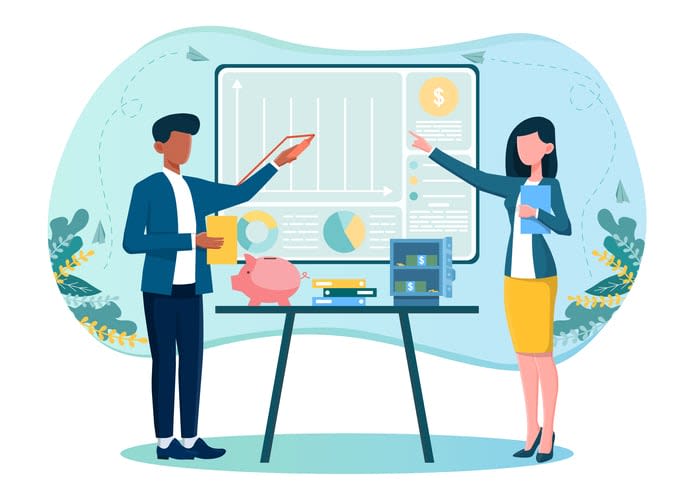What is economic growth, and why is it essential for a country’s well-being? This fundamental question lies at the heart of our understanding of a robust economy. Economic growth, defined by the increased production of goods and services, paves the way for improved living standards and low poverty rates. Through the lens of Gross Domestic Product (GDP) and other metrics, this article explores the essential theories, factors, and innovations that shape economic growth. By the end of this guide, you’ll have a comprehensive understanding of what drives an economy’s expansion and its significance in our lives.
Key takeaways
- Economic growth is a measure of an economy’s increased capacity to produce goods and services, reflected in GDP growth rates and living standards, and influenced by factors like technology, investment, and government policies.
- Multiple theories explain economic growth, with the endogenous growth theory emphasizing internal factors like innovation and human capital, while neoclassical and classical theories focus on capital, labor, technology, and resource limits.
- Beyond GDP, alternative measures of economic health such as the Better Life Index and Human Development Index offer a broader perspective on living standards, health, education, and environmental sustainability.
The essence of economic growth

Economic growth, the pulsating force behind any prosperous nation, is a vibrant process that mirrors an economy’s enhanced capacity to generate goods and services. It’s not just about numbers and charts, it’s about people’s lives. When an economy grows, living standards rise, poverty decreases, and a nation’s overall well-being improves.
The Gross Domestic Product (GDP) acts as our scale for evaluating this growth by measuring a nation’s entire economic activity, including its national income. It encompasses the value added by households, government, and industries within the economy, providing a snapshot of a country’s economic health.
The economy’s development hinges on aggregate economic growth, which mirrors its overall performance over time as reflected by the average rate of GDP growth.
Defining economic growth
At its most basic, economic growth signifies a rise in the production of economic goods and services over a certain period compared to a previous one. It’s a dynamic process, a perpetual forward march. But it’s not just about the sheer volume of production; it’s also about the value of these goods and services, which can be analyzed through the lens of a production function.
For a comprehensive understanding, economic growth is evaluated in nominal or real terms. Real growth is adjusted for inflation, distinguishing actual economic growth from changes in prices. Understanding the different measurements of growth, such as the quarterly growth at an annual rate, year-over-year growth rate, and annual average growth rate, helps us grasp the pace and consistency of economic growth over different time frames.
The importance of economic growth
Economic growth transcends beyond prospering businesses and flourishing industries. It carries a very human impact. When an economy grows, it increases the quantity of goods and services available to people, improving the standard of living.
Imagine a growing economy as a vast ocean liner, with every individual on board sharing in the benefits of the journey. As the economy grows, so do the opportunities for employment, the availability of goods and services, and the potential for individuals to improve their lives. This growth can be seen as a sign of economic recovery.
This is why economic growth is more than just a concept; it’s a crucial pathway to improved living standards and societal progress.
Theories behind economic growth

A thorough comprehension of economic growth involves exploring theories that elucidate the mechanisms and reasons behind economic expansion. These theories, each offering distinct perspectives, serve as our compass in navigating the complex world of economic expansion and development.
From the classical to the neoclassical and the modern growth theories, we find a rich tapestry of ideas and insights. These economic theory frameworks, developed by economists over centuries, explore the intricate mechanisms of economic growth, from the roles of labor, capital, and technology to the impact of internal processes like innovation and human capital.
Endogenous growth theory
The Endogenous Growth Theory presents a distinctive viewpoint on the dynamics propelling economic growth. Unlike other theories that attribute economic expansion to external factors, this theory places the spotlight on internal forces within an economy.
Introduced in the 1980s, the Endogenous Growth Theory brought a paradigm shift in economic thinking. It underscored the role of internal processes, such as innovation in technology and investments in human capital, for advancing economic growth. According to this theory, the country that establishes an innovation-friendly environment fostering the production of valuable, commercially relevant ideas will lead in terms of economic growth.
The theory argues that factors such as technological advancement, the strength of labor markets, and the availability of capital and natural resources play a significant role in driving economic growth.
Neoclassical growth theory
The Neoclassical Growth Theory projects a scenario where labor, capital, and technology take center stage. These three forces are seen as essential ingredients necessary to achieve a steady rate of economic growth.
The theory emphasizes the pivotal role of capital accumulation in determining the pace and sustainability of economic growth. It suggests that as a nation invests more in capital goods, such as machinery, buildings, or computer technology, it can enhance its production efficiency and stimulate economic growth.
Classical growth theory
In contrast to the other theories, the Classical Growth Theory posits the existence of limits to economic expansion. It proposes that growth is constrained by factors like population growth and the availability of finite resources.
This theory, championed by economists like Adam Smith and David Ricardo, suggests that wealth diminishes when population growth exceeds a certain point due to limited resources. The theory underscores the delicate balancing act between population growth and resource availability in the quest for sustainable economic growth.
Factors influencing economic growth

While theories lay the groundwork for understanding economic growth, numerous factors shape tangible growth. These include private sector investment, government policies and incentives, and global economic forces. Each plays a vital role in shaping the trajectory of economic growth.
These factors interplay in a complex dance, influencing how economies grow and develop.
- Private sector investment fosters innovation and job creation
- Government policies shape the economic landscape
- Global economic forces affect the flow of capital and investment opportunities
Understanding these factors helps us grasp the intricacies of economic growth in the real world.
Private sector investment
Private sector investment acts as a potent catalyst for economic growth. It serves as the predominant source of investment in developing countries, sparking innovation, creating jobs, and integrating economies.
Investments in manufacturing facilities, machinery, and technology enhance production efficiency, driving economic growth. The decisions of consumers and producers in a capitalist free market significantly influence economic growth. Such investments have been impacted by a decline in private investment as a percentage of GDP since the 2009 global financial crisis.
Endogenous growth theory advocates for collaboration between government and the private sector in investing in human capital and innovation as critical drivers of economic growth.
Government policies and incentives
Government policies and incentives can significantly steer economic growth. Through tools such as tax reductions, modifications in government spending, and adjustments in monetary policies like the cost of borrowing, governments can stimulate economic growth.
Government policies can create an environment conducive to private investment, especially during economic recessions. Governments can also promote economic growth by incentivizing investment and innovation, guiding the strategic allocation of resources for infrastructure development.
Global economic forces
Global economic forces, transcending individual nation’s boundaries, significantly influence economic growth. Globalization, facilitated by government fiscal policies and international trade agreements, allows businesses to extend their operations across borders, influencing global economic growth.
However, these global forces also bring challenges. The migration of human capital, commodity market challenges, and divergent growth prospects across the world’s regions all present obstacles to economic growth. Understanding these global economic forces is crucial for navigating the complexities of economic growth in an interconnected world.
Technological progress and innovation

The digital revolution has opened a new frontier for economic growth. Technological advancement and innovation now stand as crucial elements in enhancing productivity and propelling economic growth.
Technological progress refers to the development and application of ideas and technologies that improve goods, services, or their production efficiency. From smartphones to AI-driven automation, technology has brought about radical changes in economic development, altering work processes, production methods, and consumption patterns. These advances have given rise to new industries and job opportunities, offering a glimpse into the future of economic growth.
The impact of technological change
Technological changes exert a deep impact on economic growth. It:
- Increases labor productivity
- Allows firms to produce more output with the same level of inputs
- Revolutionizes industries, leading to enhanced efficiency and new economic opportunities.
Technological advancements carry potential negative impacts too, such as the depreciation of human capital due to unemployment or the inability of individuals to adapt to new technologies. But they also bring immense benefits by improving productivity, offering new work structures, and facilitating higher rates of globalization.
The importance of innovation
Innovation serves as the vital force driving economic growth. It boosts consumer welfare, productivity, and business profitability, leading to enhanced wages and living standards.
Innovation doesn’t occur in a vacuum. It needs a conducive environment where ideas can flourish and be translated into valuable goods and services. Government incentives and supportive policies can foster private-sector investment in innovation, consequently contributing to economic growth. The development of new products, services, and processes can create new industries and job opportunities, opening untapped markets.
Human capital and economic growth

Human capital also stands as a crucial component in the blueprint for economic growth. It includes not only a worker’s education and training but also their health and experience, which are essential for enhancing productivity and driving economic growth.
Well-educated and skilled workers are a critical factor in the success of businesses, leading to broader economic growth. Economies with a higher percentage of educated individuals tend to grow more rapidly, emphasizing the importance of education in national economic development.
Diverse skills and knowledge within the workforce enhance the innovation and productivity efforts necessary for sustained economic advancement.
Education and training
Education and training lay the groundwork for a flourishing economy. Systems geared towards emerging fields such as science and technology play a crucial role in advancing a nation’s economic performance.
The overall efficiency of an economy is enhanced when the workforce is more educated, allowing for the efficient execution of complex tasks that involve literacy and critical thinking. By focusing on the training and education of its workforce, a nation can:
- Improve its competitiveness on the global stage
- Increase productivity and innovation
- Reduce unemployment rates
- Enhance the overall quality of life for its citizens
A well-trained labor force generates positive externalities, contributing to the improved performance of companies across the economy.
Health and well-being
The adage ‘health is wealth’ rings true in the context of economic growth as well. Health and well-being contribute significantly to the overall efficiency and productivity of the workforce. A healthy population contributes to social and economic prosperity, which is important for long-term productivity within an economy.
Healthy individuals are more likely to invest in their education and skills development, which in turn benefits the economy as a whole. Healthy workers are more efficient, and this has a positive impact on economic performance. Viewing health as an investment rather than just a consumption expenditure can enhance the chances of future productivity.
Measuring economic growth: gross domestic product (GDP) and alternative metrics

Quantifying economic growth holds equal importance in comprehending its dynamics. While GDP is the primary measure of economic growth, alternative metrics offer broader perspectives on economic well-being and sustainability.
These measures provide a comprehensive snapshot of a nation’s economic health, considering not just the total value of goods and services produced but also aspects such as:
- living standards
- health
- education
- environmental sustainability
The choice of measure can significantly shape our understanding of economic growth and progress.
Understanding GDP
GDP stands as the bedrock of economic measurement. It measures the total market value of all goods and services produced within a country over a specific period.
GDP can be calculated in two ways: nominal or real terms. Real GDP, which accounts for inflation, measures the change in the value of goods and services produced to reflect economic growth. The calculation of GDP considers the following factors:
- Consumption
- Investment
- Government spending
- Net exports
This comprehensive view of a country’s economic performance, supported by institutions like the World Bank, helps to understand its overall economic health.
Alternative metrics
Despite being a potent tool, GDP per capita fails to encapsulate all facets of economic well-being. This is where alternative metrics come into play, offering a more holistic picture.
Alternative metrics like the Better Life Index, Genuine Progress Indicator, and Human Development Index consider factors such as mental health, education, and environmental impacts, providing a broader assessment of economic well-being and sustainability. These metrics offer valuable insights into the multifaceted nature of economic growth and progress, enriching our understanding beyond what GDP alone can provide.
Summary
We’ve journeyed through the fascinating landscape of economic growth, exploring its essence, the theories that explain its dynamics, the factors that influence it, and the crucial role of technology, human capital, and measurements in this process. As we’ve seen, economic growth is a complex, multifaceted phenomenon, shaped by a myriad of factors, from internal forces like human capital and technology to external influences such as government policies and global economic forces. While the journey to economic growth is not without its challenges, the rewards are immense, from improved living standards to the creation of new industries and opportunities. Let’s continue to chart the course of progress, for in understanding economic growth, we hold the key to our shared prosperity.
Frequently asked questions
A positive economic growth rate indicates an expansion in the economy, leading to higher employment rates, improved living standards, and greater opportunities for businesses and individuals.
The major theories of economic growth are the classical, neoclassical, and endogenous growth theories, each offering distinct perspectives on how economies expand and develop.
Technological progress and innovation positively impact economic growth by boosting productivity, revolutionizing industries, and creating new economic opportunities. This leads to enhanced efficiency and increased output with the same level of inputs.
Human capital, which encompasses education, training, health, and experience, plays a crucial role in boosting productivity and fostering economic growth. It is instrumental in driving the success of businesses and overall economic advancement.
Economic growth is mainly measured by GDP, which represents the total market value of all goods and services produced within a country over a specific period. Alternative metrics such as the Better Life Index and Human Development Index provide broader perspectives on economic well-being and sustainability.





